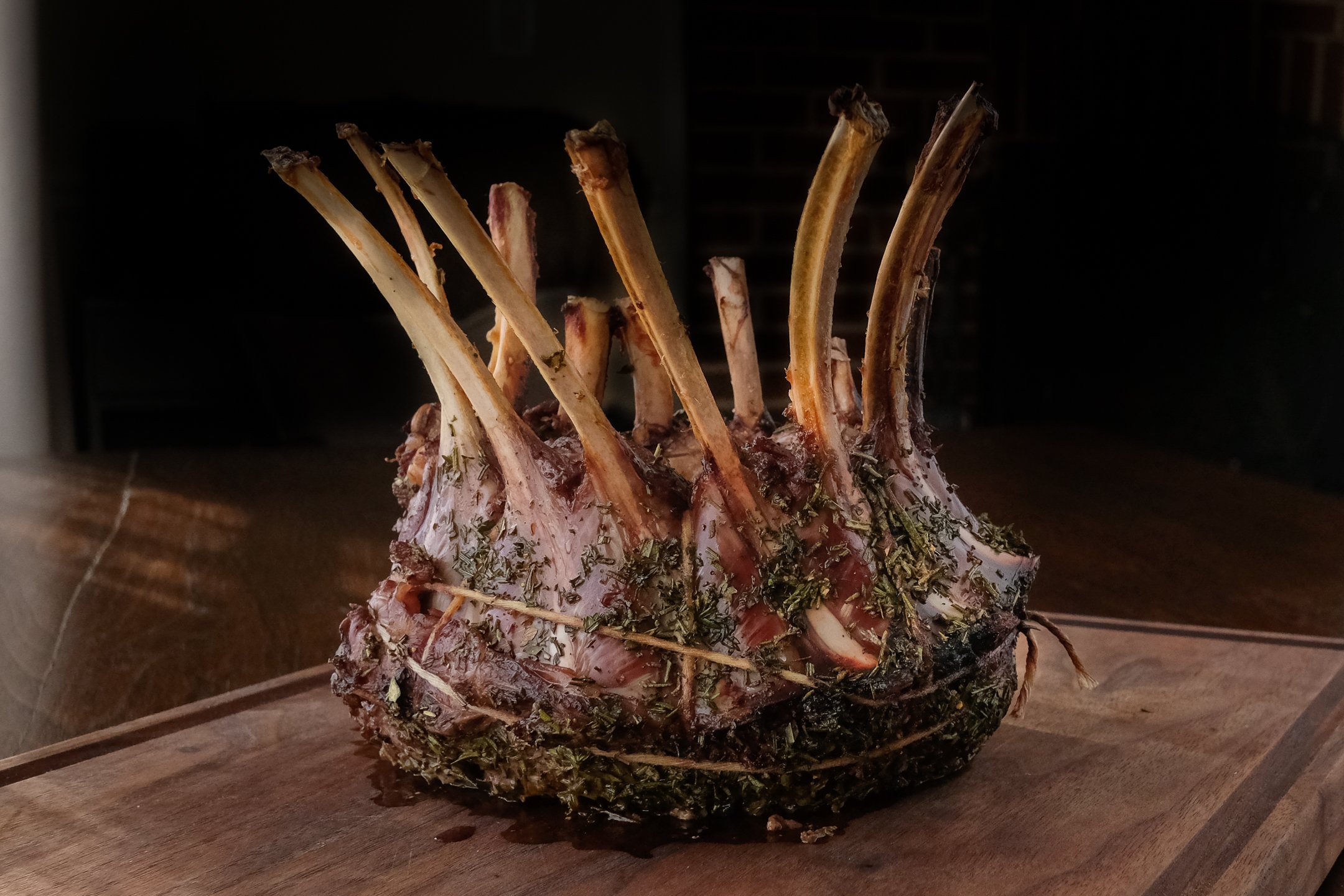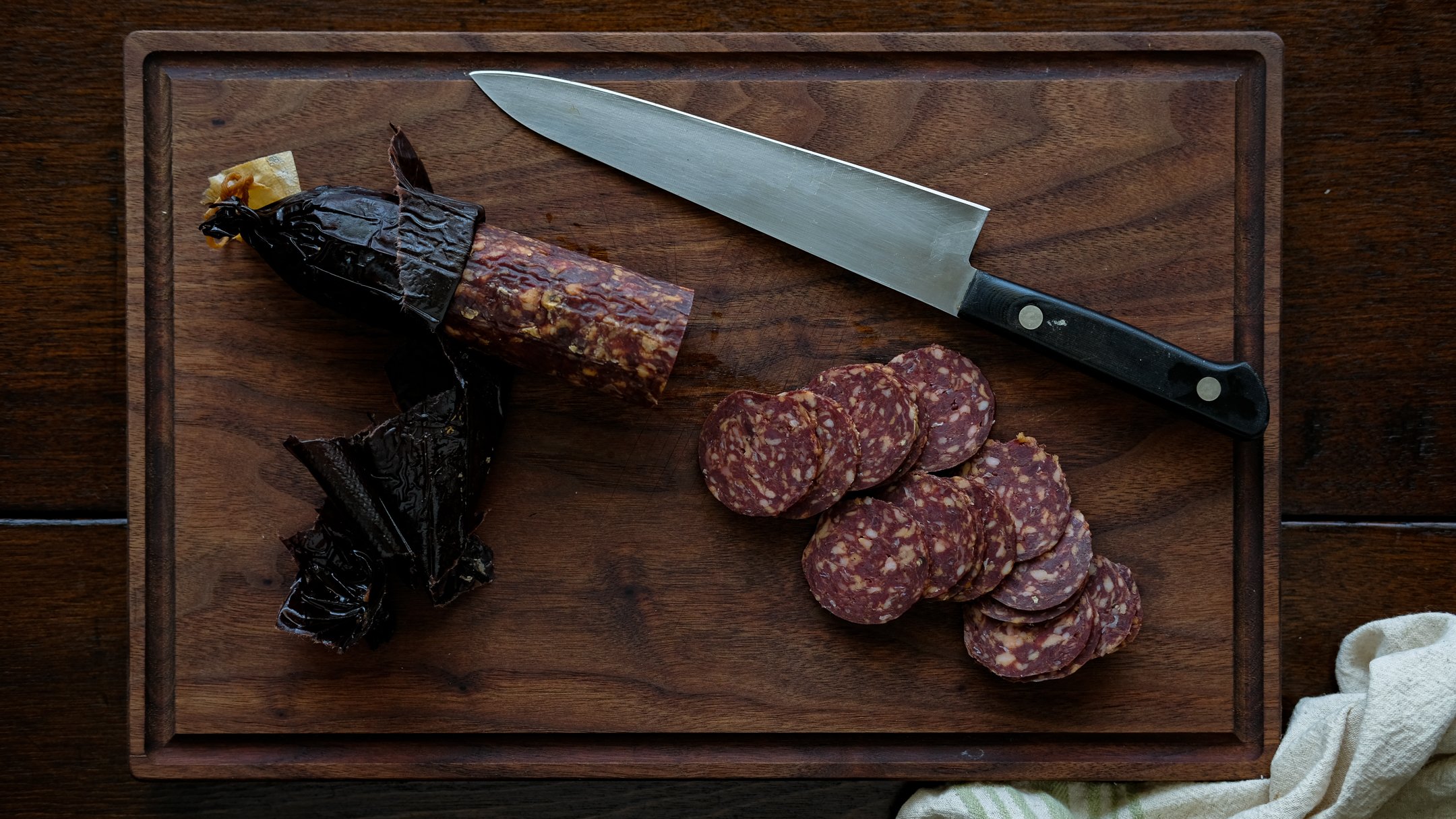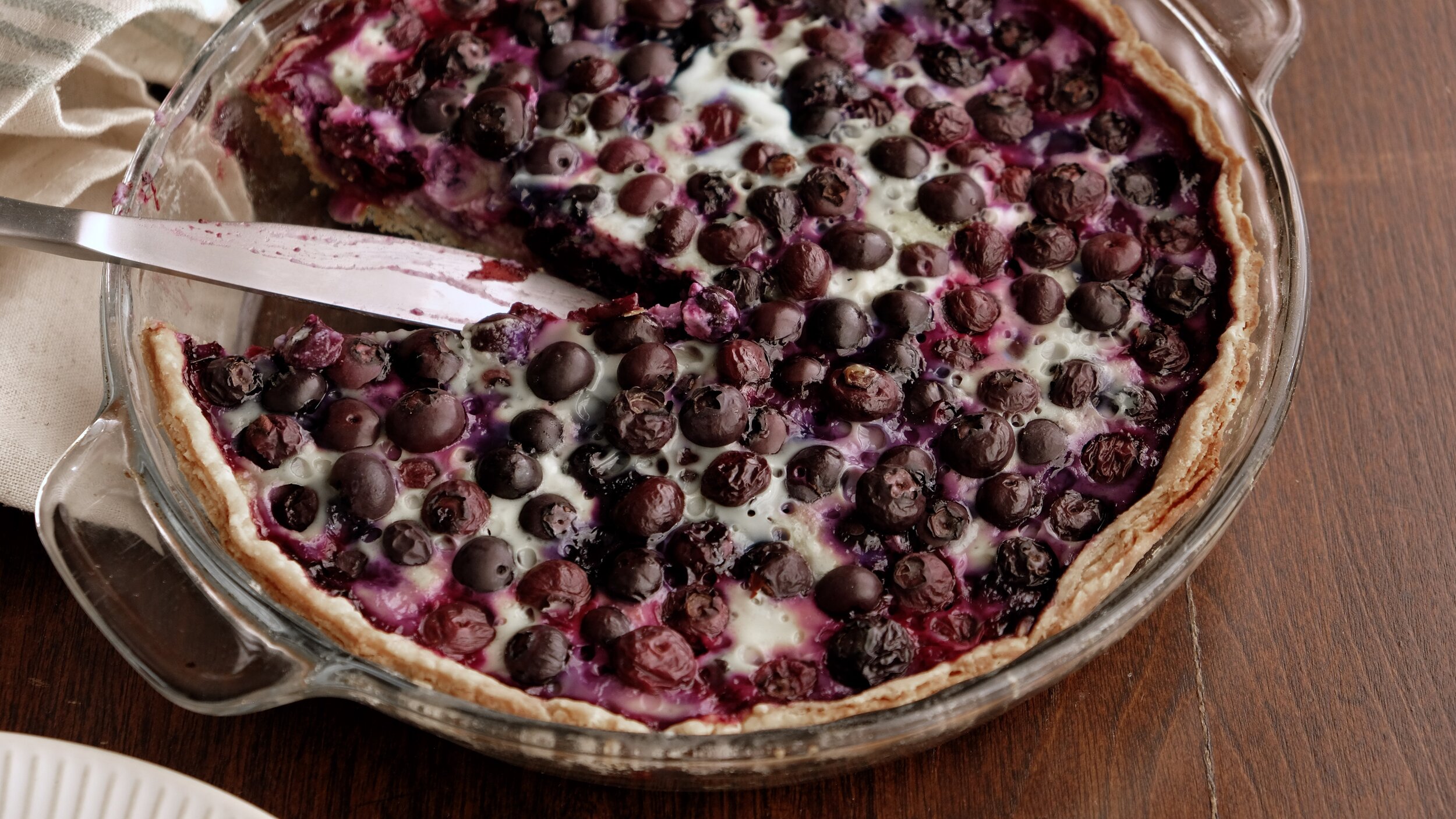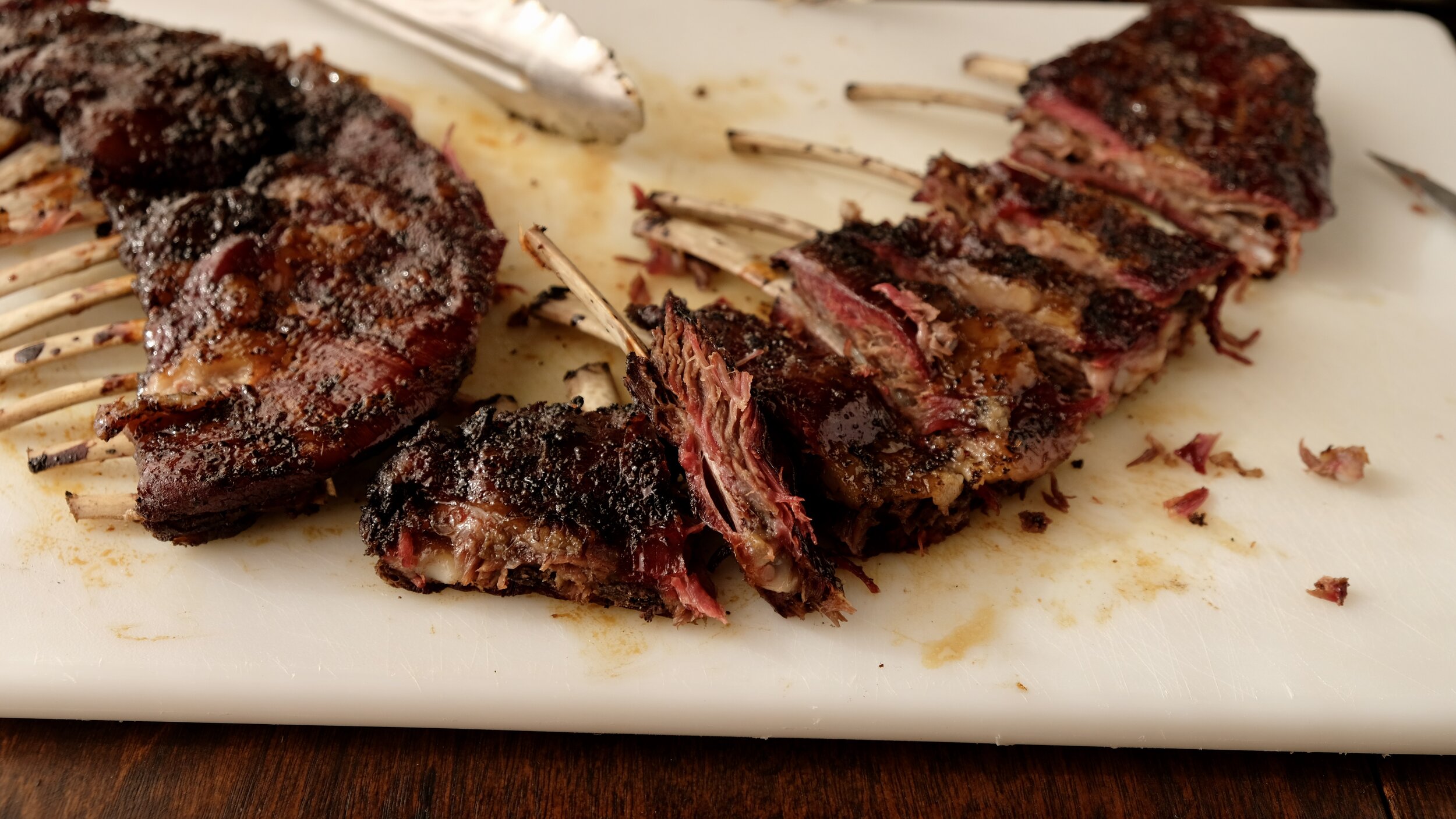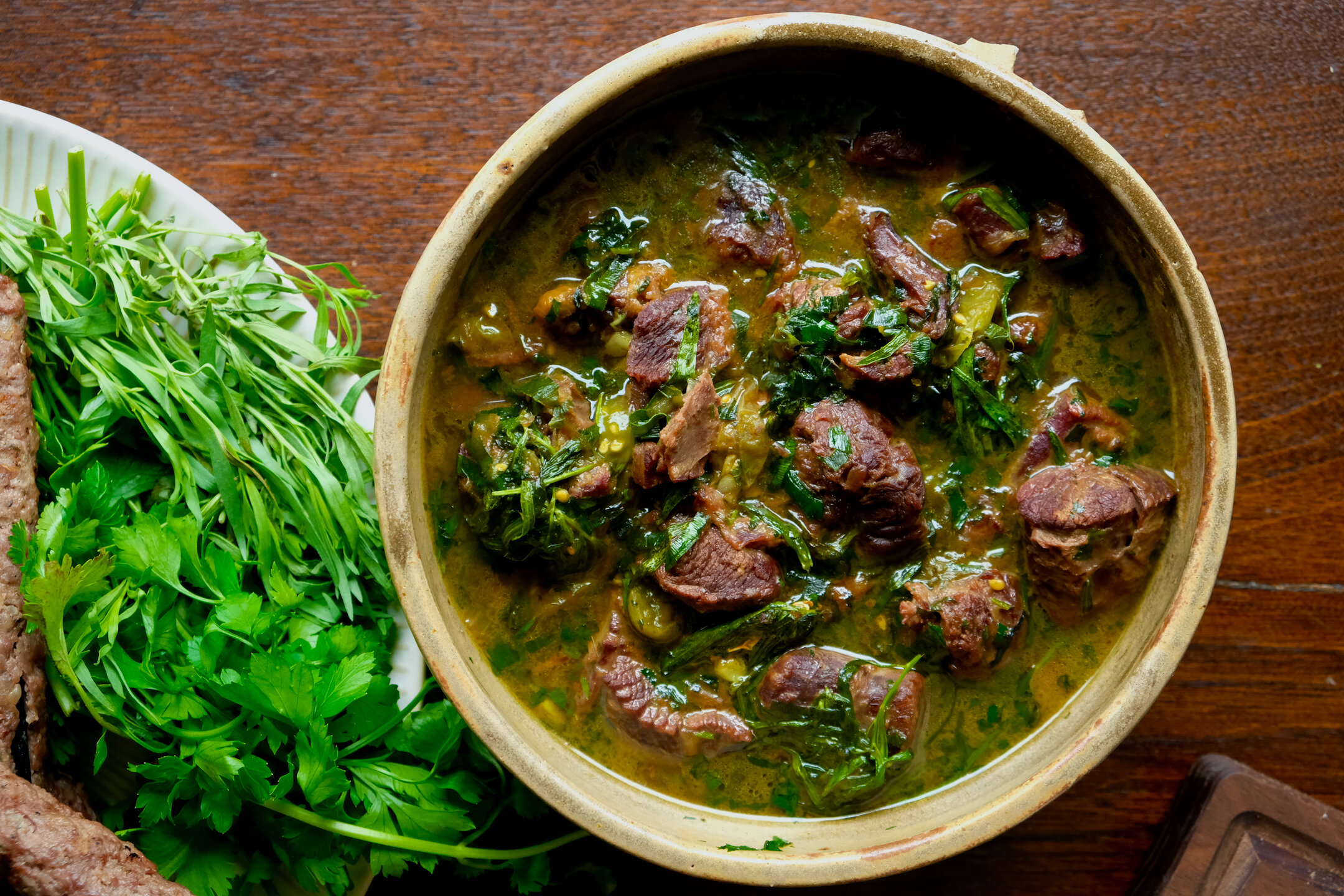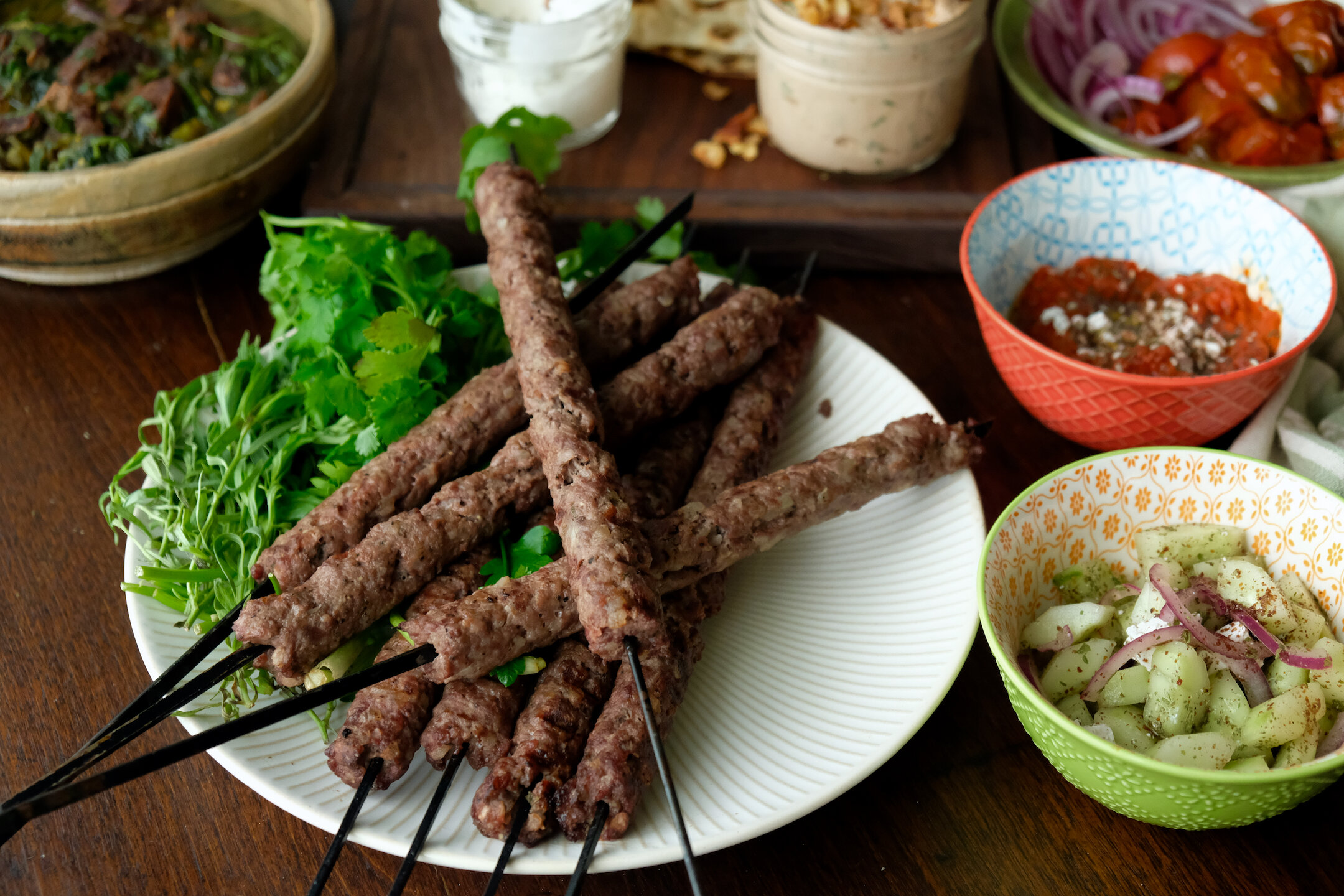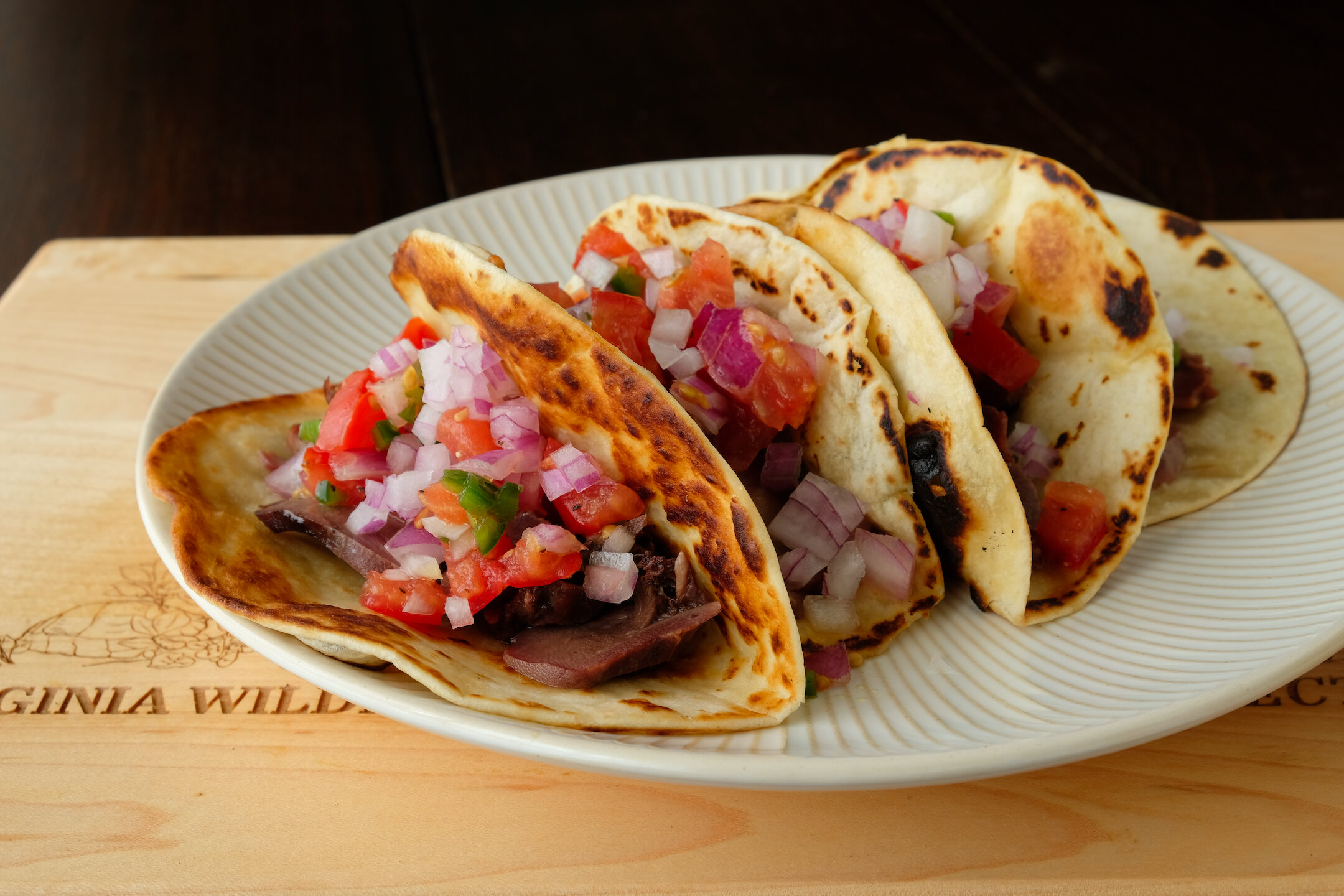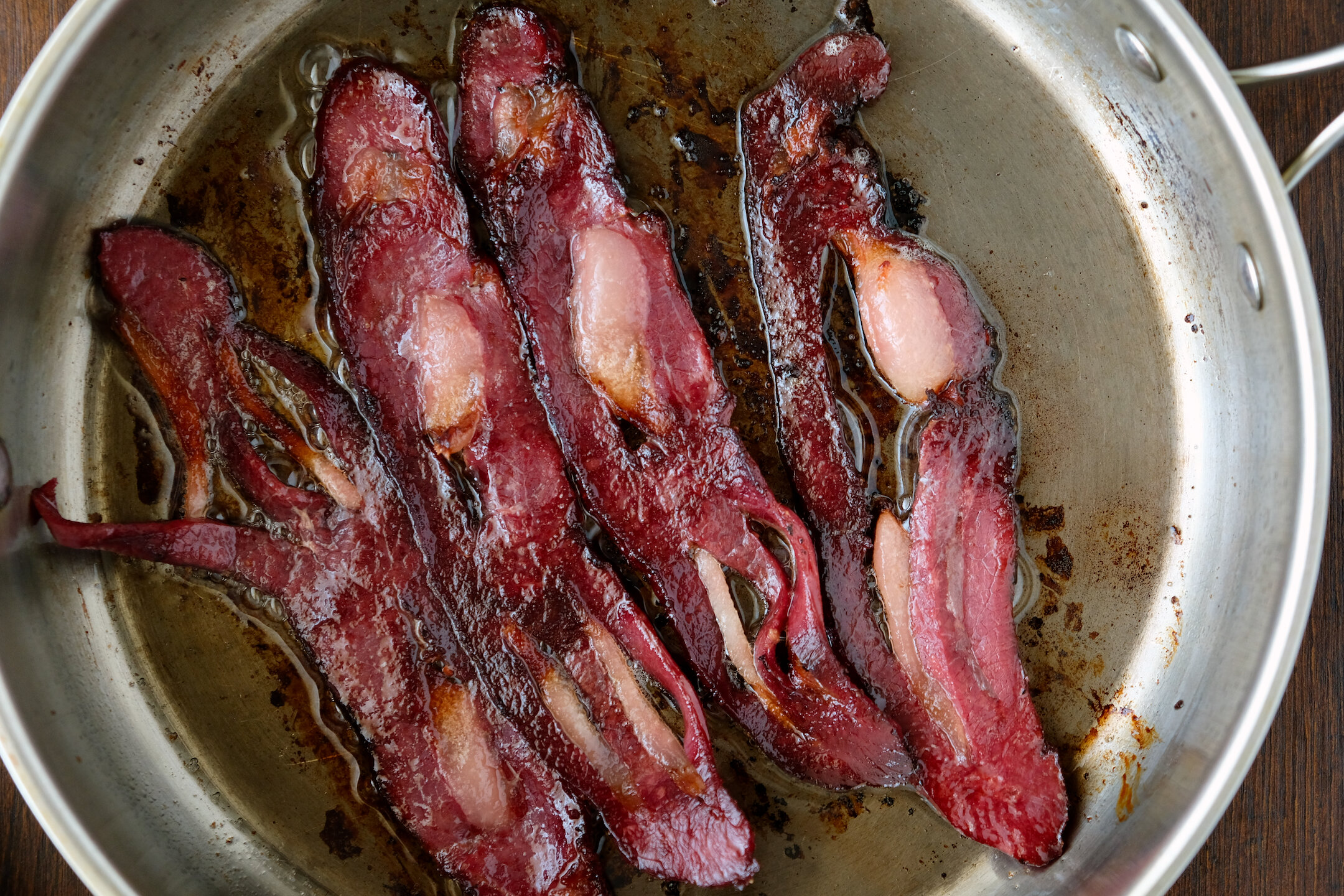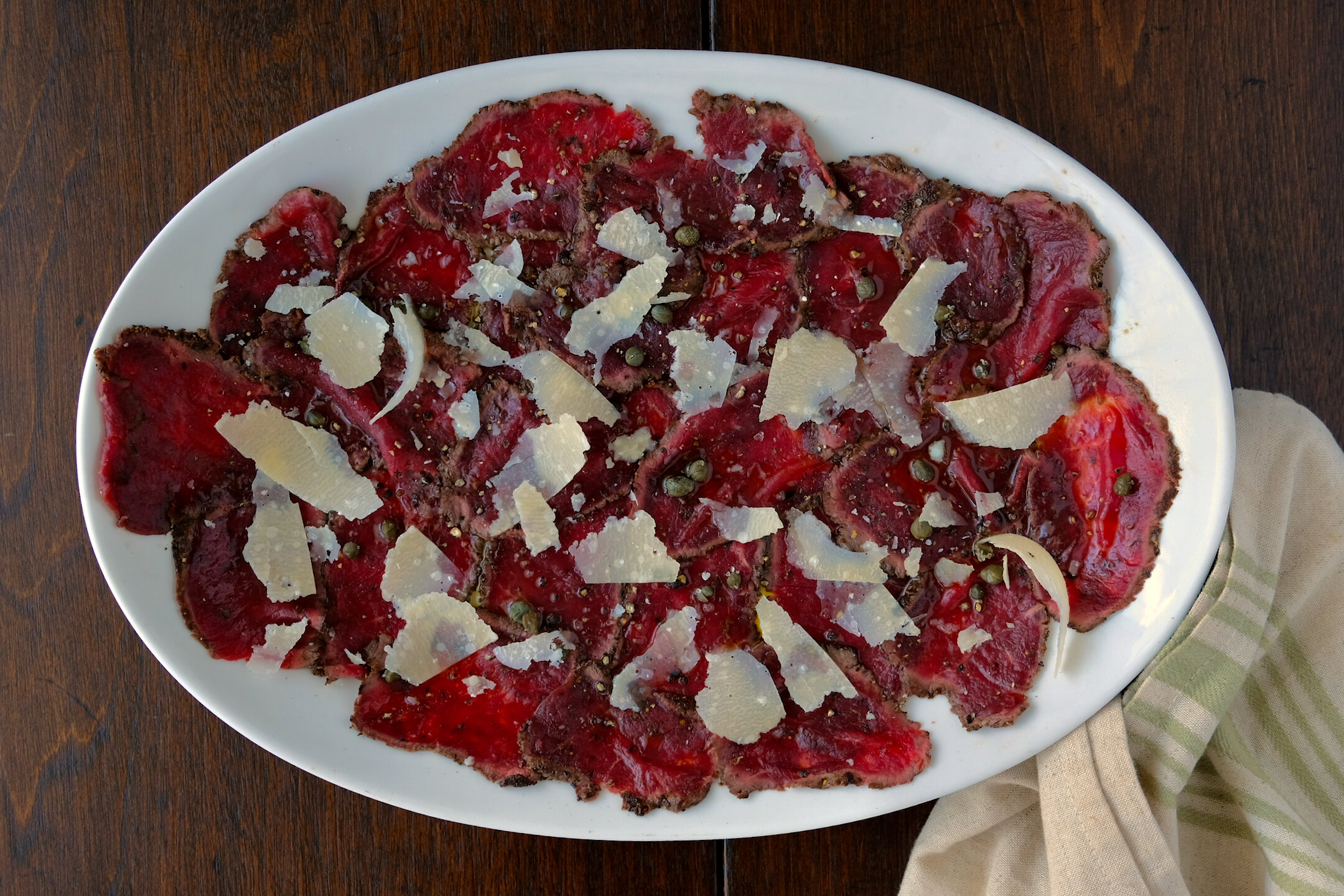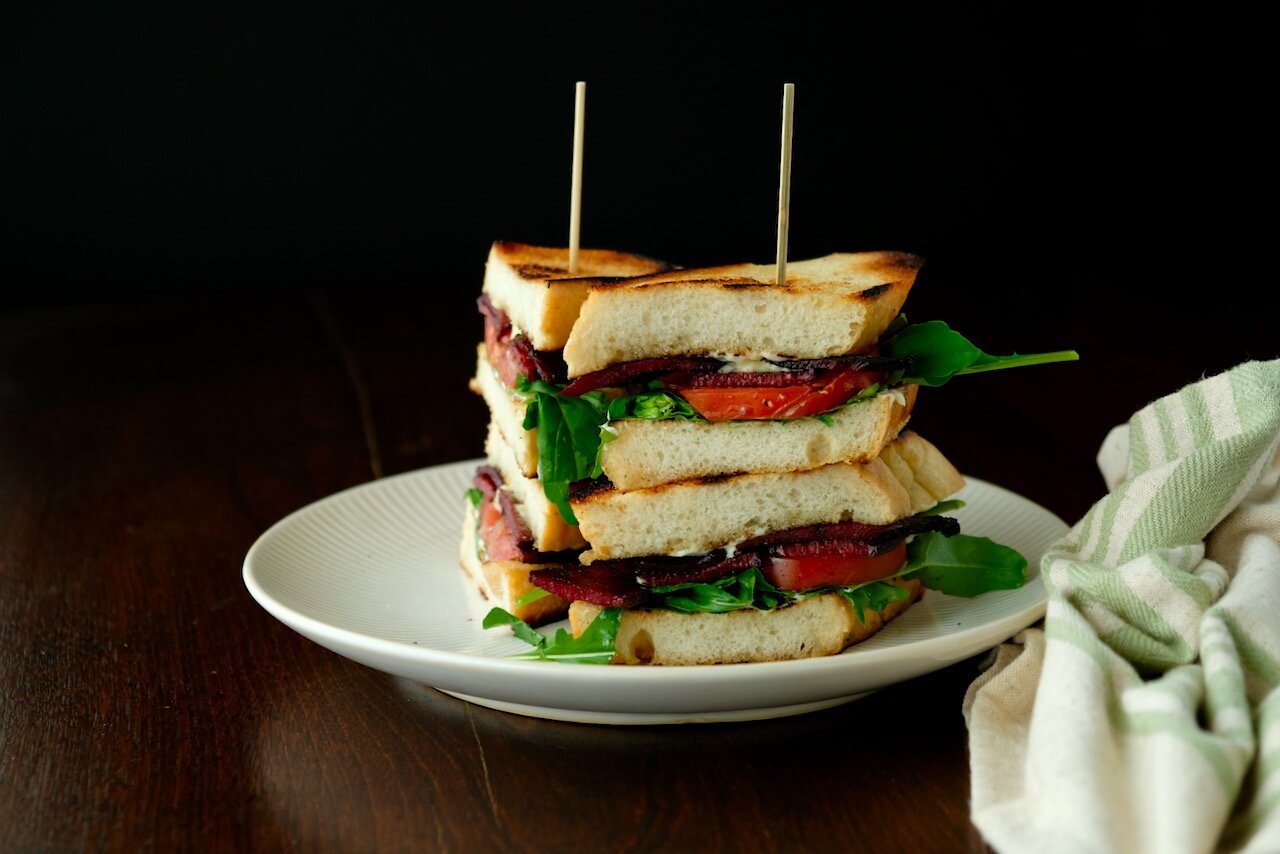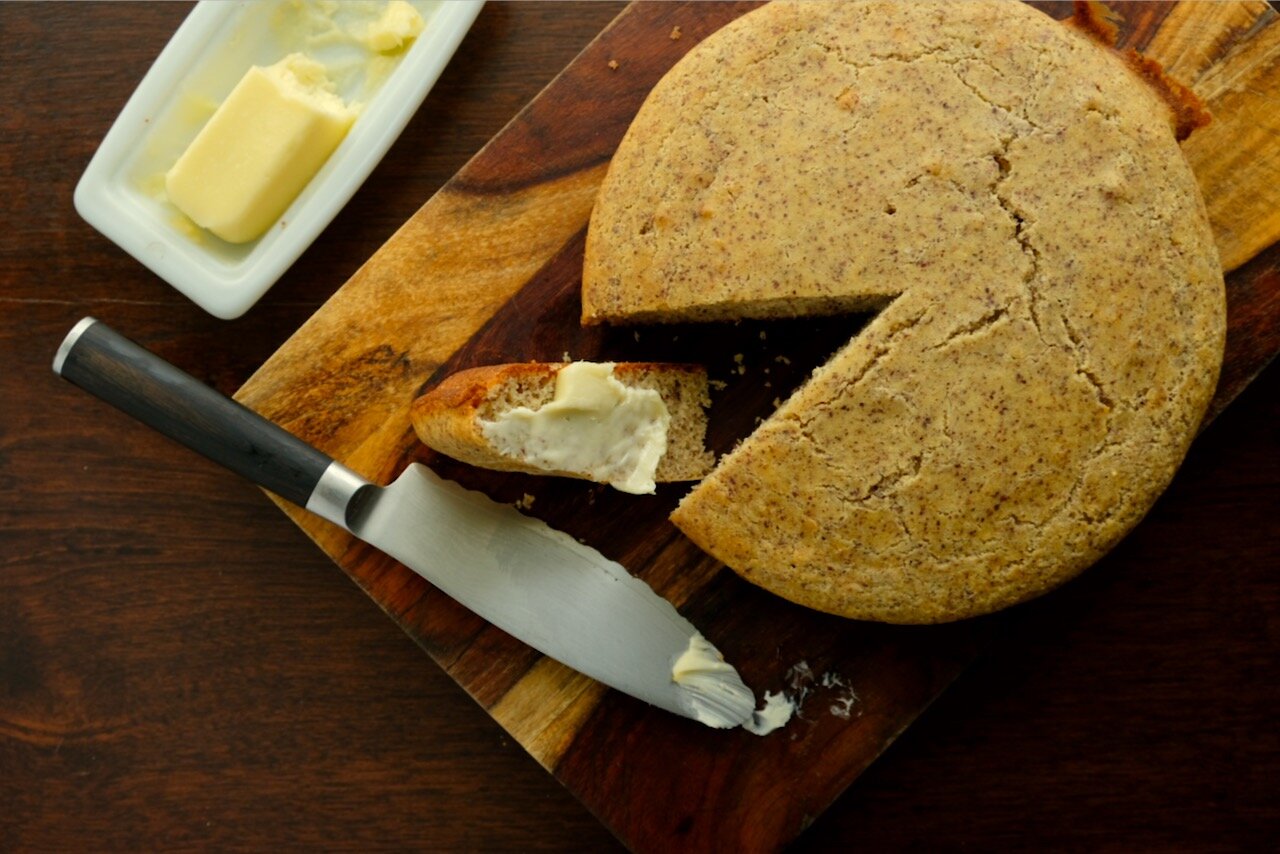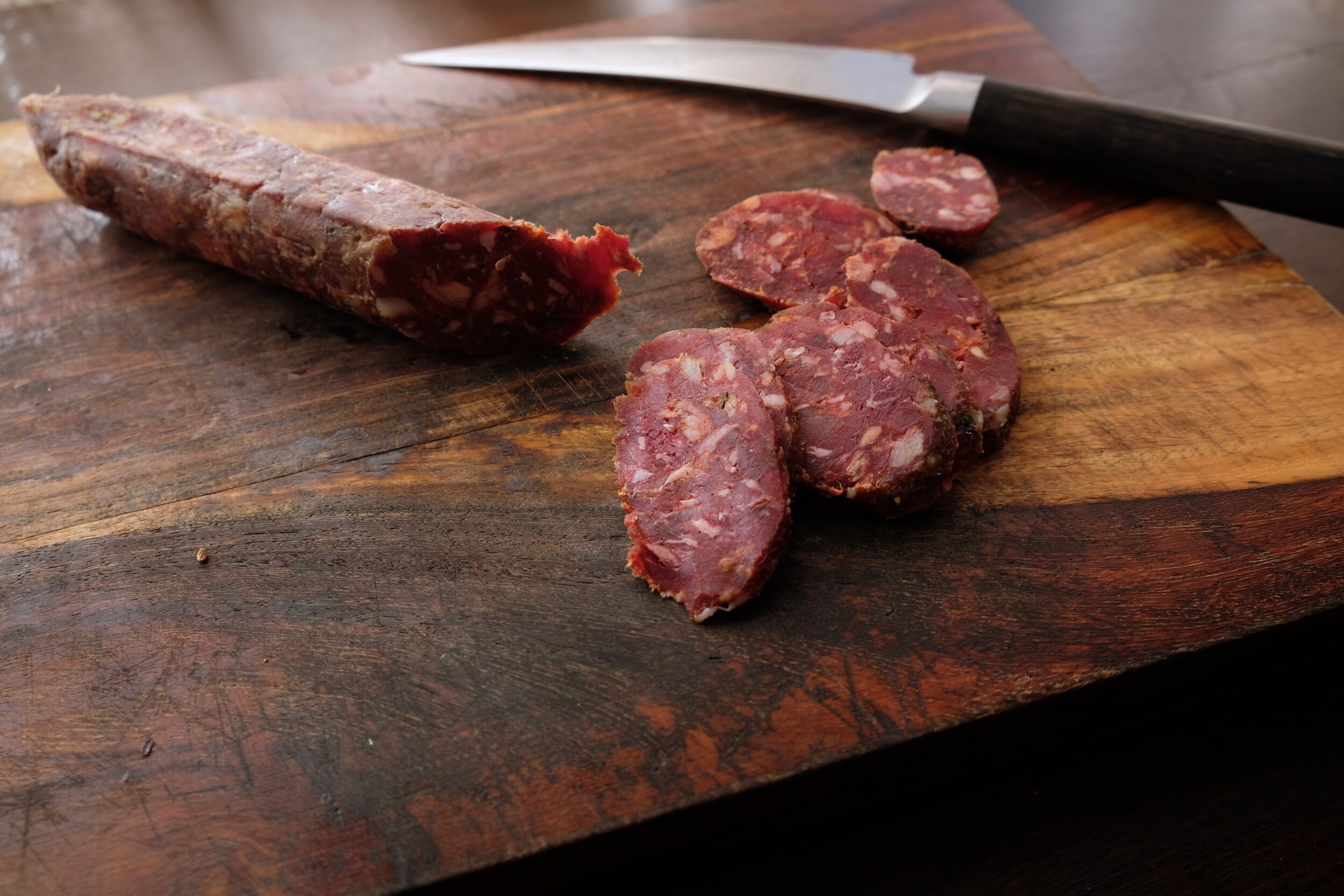Venison Neck Pot Roast

When it comes to what kind of deer we kill each season, a lot of variables come into play. The two most pressing ones are: how empty the freezer is, and how much time we have to hunt. We’ve made the decision to only eat wild game we harvest, so filling the freezer always takes precedence over finding a big antlered buck. That being said, given the choice between an average size doe and a big bodied buck, the big one is in trouble.
Antlers are cool- we have a bunch of them euro mounted on a wall- but “you can’t eat horns,” as they say. Our favorite part of a big bodied deer is what we call the “fifth quarter”. The neck on a mature, rutted up buck is absolutely massive compared to that of a doe or smaller buck. Bone in, we’d estimate the neck to be just about double the weight of a front shoulder- no small amount of meat.
A lot of people don’t do much with the neck other than grind it. It’s a shame, because the neck is full of muscles and connective tissue that, after a gentle braise, relax into the most tender, unctuous cut of meat. One thing to keep in mind when you’re choosing what goes into your grind pile is how often the muscle was used by the deer- muscles that get more use are tougher, yes, but also exponentially more flavorful. They also tend to have more connective tissue, which means more collagen, adding depth and texture to your braise. We never grind shanks or necks for this reason. If you’ve been stockpiling venison in your freezer and don’t have space for whole neck roasts or shanks, you can always pressure can the meat. We’ve found that because of the amount of collagen in the meat, these cuts hold up better to the intense cook times and heat of the canner better than roasts do.
Another option for those of you who are concerned about freezer space is to either debone or cross-cut the neck. A smaller deer is prime for deboning, but with a big buck like this, we wanted to go ahead and try out the bandsaw. Crosscutting allows for a beautiful presentation and tidy freezer storage. You don’t have to have access to a bandsaw either- any saw will work, but the bandsaw is definitely the easiest.
After cross cutting the neck, we couldn’t think of a more fitting dish than this pot roast. Simple, savory, and aromatic, it’s comfort food, pure and simple.
I’m sad to have to add this disclaimer after extolling the virtues of the neck roast, but I thought it would be prudent to add- if you’re living in a CWD area, do your due diligence when it comes to eating a neck roast. Although there have been no documented cases of human transmission, many guidelines suggest that caution be exercised with meat that may become contaminated by spinal fluid. In the case of cross-cutting a neck roast, the general wisdom is just not to do it. We are extremely lucky to live in an area without known CWD transmission, and so feel comfortable with this cut and don’t give it a second thought. Please do your own research and make up your own mind about the risk level you are comfortable assuming when it comes to CWD.
Venison Neck Pot Roast
Prep: 30 minutes
Cook time: 3 hours, inactive
Ingredients:
1-2 pieces venison neck, cross cut (~1.5” thick)
6 carrots, peeled, cut into 2” pieces
2 yellow onions, large dice
2-3 sprigs rosemary
6-8 sprigs thyme
1 quart venison stock
~½ cup red wine
~¼ cup flour
Method
Preheat oven to 275F
In a dutch oven, add oil and heat to medium high. Add in carrots and brown for 4-5 minutes, remove from pan. Brown onions in the same pan, 4-5 minutes. Remove from the pan. Turn pan to high heat and season the neck roast with salt and pepper. Dredge it with flour, shaking off any excess. Brown all sides of the neck in the pan, 1-2 minutes each side. Remove neck roast from pan.
Use red wine to deglaze the pan, scraping up any browned bits from the bottom.. Return the neck, carrots and onions to the pan. Add in thyme and rosemary. Top with stock to just cover the neck, and bring to a simmer. Cover with lid and place on the center rack of the oven. Cook until fork tender, approximately 3 hours.





